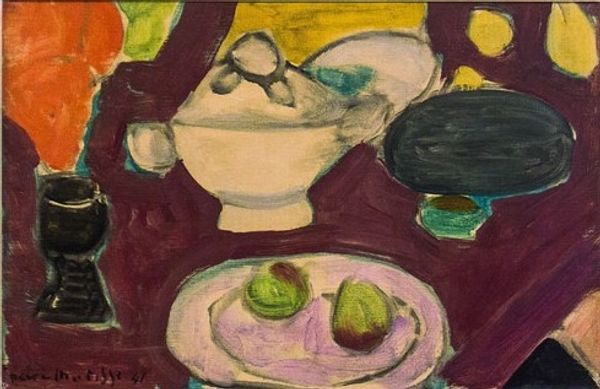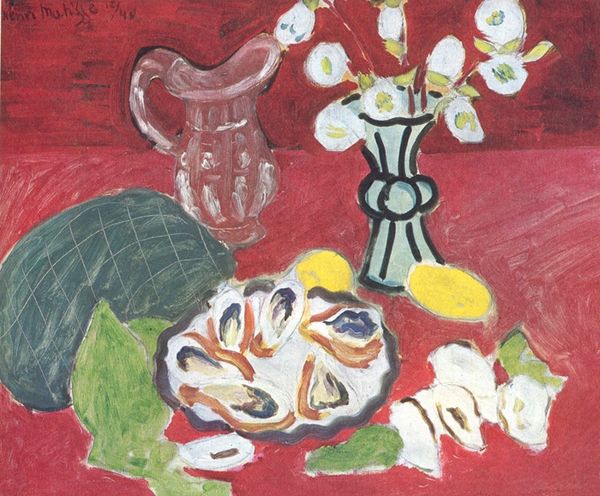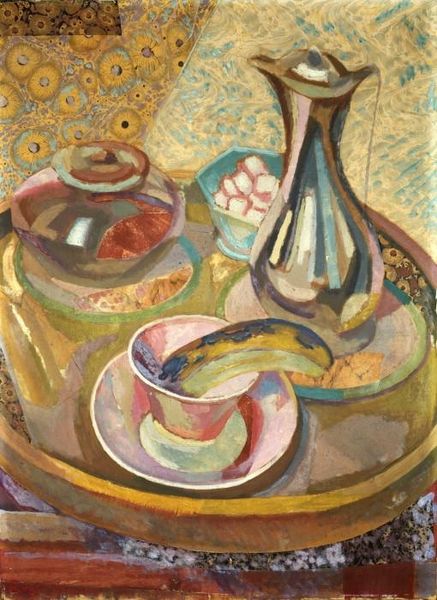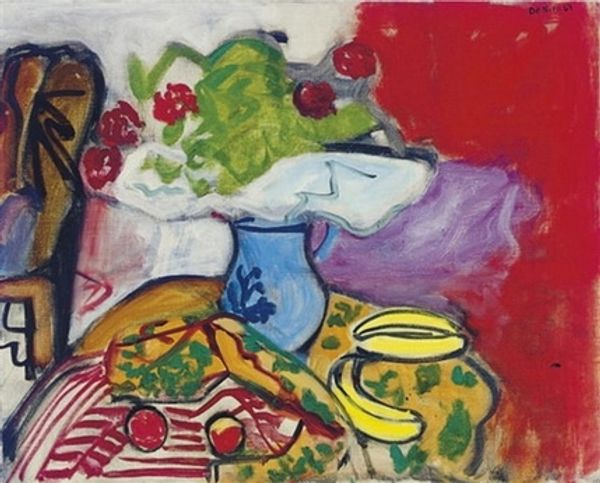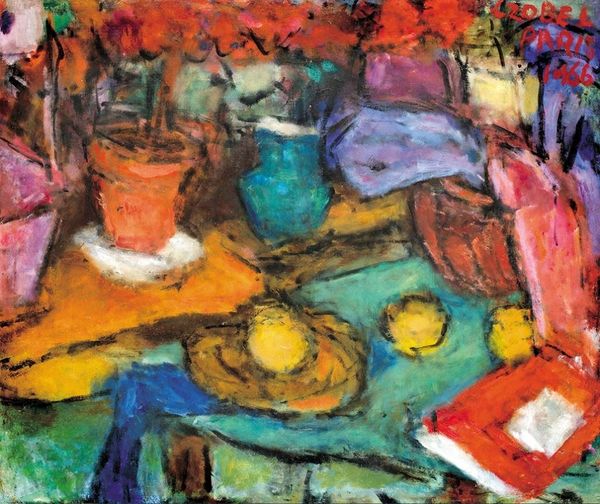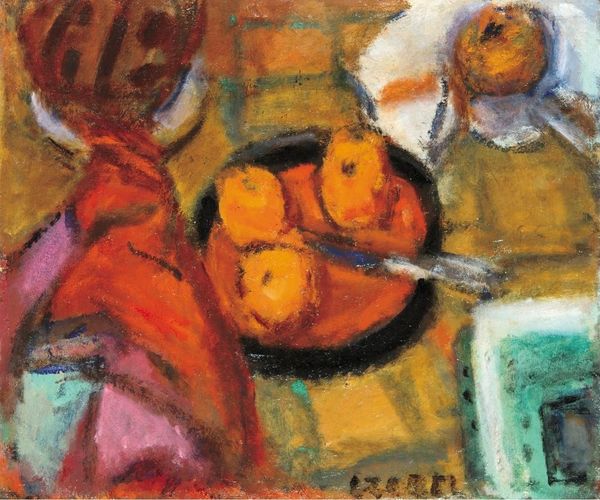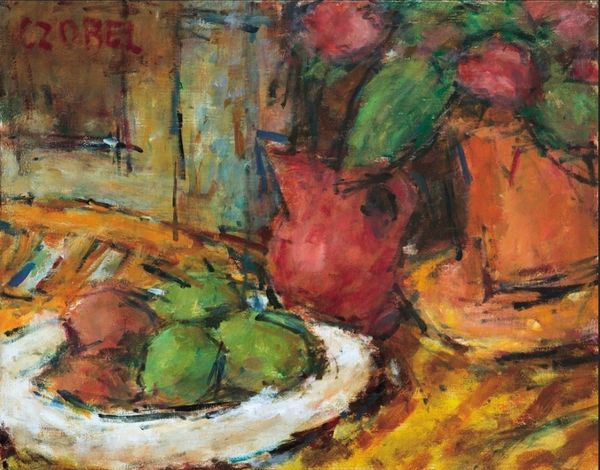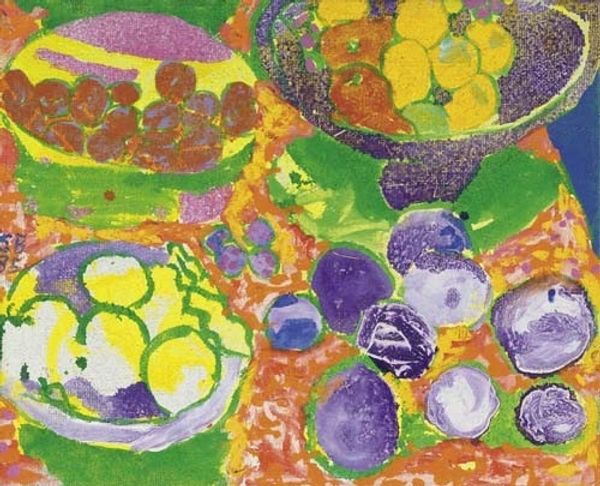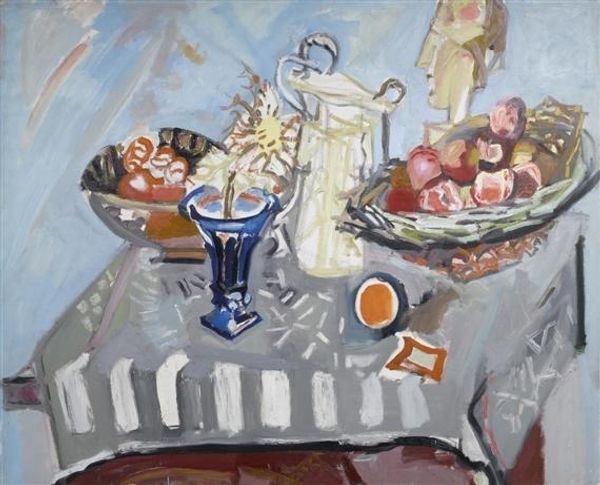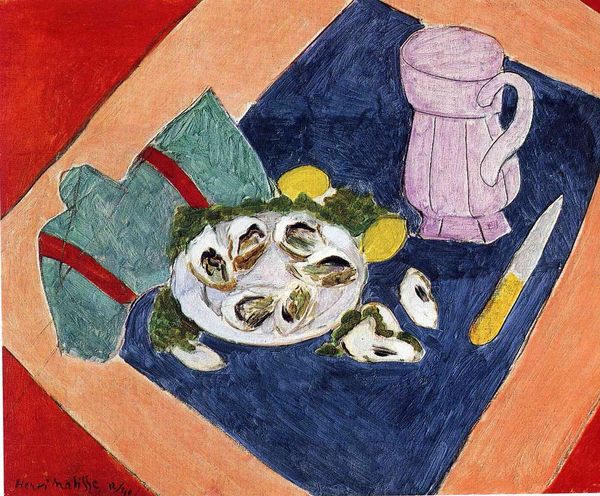
Copyright: Henri Matisse,Fair Use
Curator: Examining Matisse's "Oysters," a 1940 oil painting, prompts us to consider the means and mode of artistic production beyond the pure aesthetic. Editor: Yes, this is "Oysters" by Matisse, painted in 1940. I find the composition playful, with its bold colors and flattened perspective. What are your thoughts on this piece? Curator: Beyond its playful appearance, I see a dialogue concerning class and consumption during wartime. What materials are present? Oysters, lemons, fine china – luxuries in 1940s France under German occupation. How do these elements complicate our understanding of Matisse's practice? Editor: So, are you saying that even in a seemingly simple still life, Matisse is engaging with the social and economic realities of the time through the objects he chooses to depict? Curator: Precisely! Consider the very materiality of oil paint. Its cost, its availability during wartime. Every brushstroke represents a decision, a negotiation with the scarcity of resources. It makes you question the labor involved, doesn’t it? What would ordinary citizens eat? Who is enjoying these oysters? Editor: That's fascinating. I hadn't considered how the socio-economic climate would impact Matisse's materials and the very subject of his work. Curator: Think also about "Fauvism". Was this a movement only of aesthetics? We could even extend this to ask, what did this period look like for women and artmaking in general? Editor: It gives me a new appreciation for the layers of meaning embedded in something that seems purely decorative on the surface. Curator: Exactly! It’s about seeing beyond the image to the hands, materials, and socio-economic conditions that brought it into being.
Comments
No comments
Be the first to comment and join the conversation on the ultimate creative platform.
